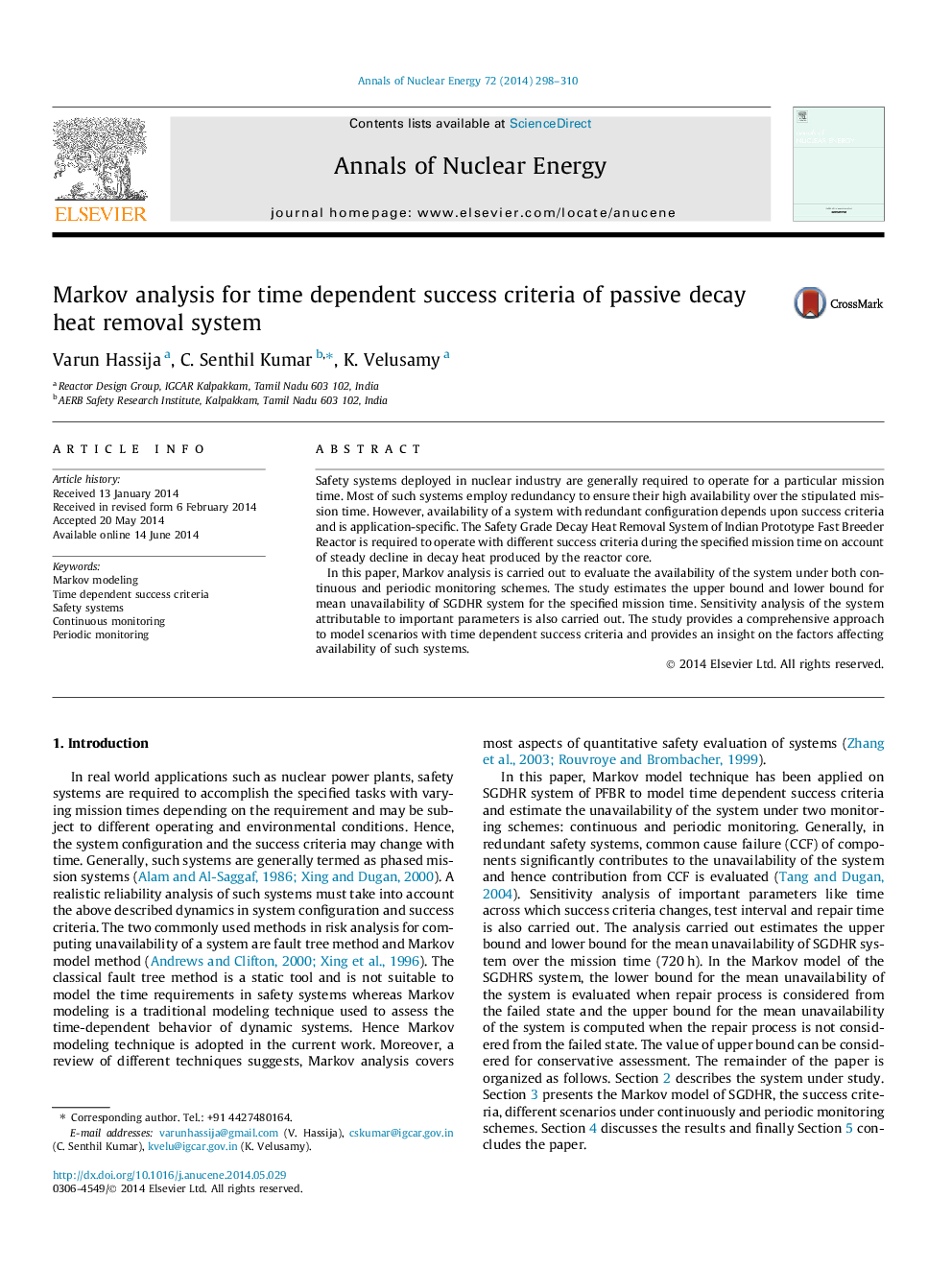| Article ID | Journal | Published Year | Pages | File Type |
|---|---|---|---|---|
| 1728140 | Annals of Nuclear Energy | 2014 | 13 Pages |
•Unavailability estimation of decay heat removal system with time dependent success criteria.•Dynamic modeling of the system under both continuous and periodic monitoring schemes.•Sensitivity of unavailability to various factors.•Comprehensive Markov modeling with and without considering common cause failures.•Estimation of upper bound and lower bound for the mean unavailability of decay heat removal system.
Safety systems deployed in nuclear industry are generally required to operate for a particular mission time. Most of such systems employ redundancy to ensure their high availability over the stipulated mission time. However, availability of a system with redundant configuration depends upon success criteria and is application-specific. The Safety Grade Decay Heat Removal System of Indian Prototype Fast Breeder Reactor is required to operate with different success criteria during the specified mission time on account of steady decline in decay heat produced by the reactor core.In this paper, Markov analysis is carried out to evaluate the availability of the system under both continuous and periodic monitoring schemes. The study estimates the upper bound and lower bound for mean unavailability of SGDHR system for the specified mission time. Sensitivity analysis of the system attributable to important parameters is also carried out. The study provides a comprehensive approach to model scenarios with time dependent success criteria and provides an insight on the factors affecting availability of such systems.
